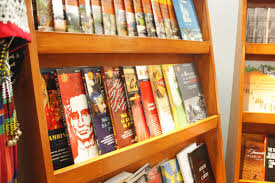
Japanese period is our first topic for the final period. Japanese period has been called one of the darkest days in the history and literary tradition of the Philippines. The wartime experiences and events of the troubled times left indelible imprints to the lives of the Filipino nation. However, there are still few and remaining bright spots in this generally dark and gloomy days. It is our duty, as students of Philippine literature not to be selective and biased in our treatment of the various literary pieces regardless of what period it was produced. Moreover, the richness of our literary tradition incorporates all possible literatures and, like a solitary candle flickering in the dead night, a certain piece might just be waiting for us to discover and appreciate its exquisite beauty peculiar to the period in which it was written. Hence, come along and join me discover such gems of our Philippine literature during the Japanese period.
Intended learning outcomes
At the completion of this topic, you should be able to:
- trace the historical events and development of Philippine Literature during the Japanese period;
- discuss the types of poetry (Haiku and Tanka) during the Japanese period; and
- analyze and appreciate the poem as a literary genre by writing own Haiku and Tanka.
Historical background
The stride and growth of the Philippine literature in English language and the development of Philippine literature in general was interrupted during the Japanese period. The Japanese censured all publications except Tribune and Philippine Review. During the Japanese period, Philippine Literature in English was stopped and writers turned to writing in Filipino. The Japanese authorities, with extreme hate to the Americans, did their best to turn the Filipinos’ sympathy away from them. They rewarded handsomely the Filipinos who are faithful to them.
In prose literature, the weekly Liwayway Magazine was put into strict surveillance and was managed by a Japanese named Ishiwara. The Japanese language, Nippongo was introduced but not well-embraced by the Filipinos despite it is being forcefully taught by the Japanese. With the prohibition of writing literary pieces in English language, Filipino literature was given a break. Many Filipino writers wrote plays, poems, short stories, etc. in the Tagalog and other vernacular language. Topics and themes were often about life in the provinces to escape Japanese control and censorship.
Philippine literature poems during Japanese period
Haiku
Haiku is a poem of free verse of Japanese origin. It has 17 syllables divided into 3 lines. The first has 5 syllables, second has 7, and the third has 5 syllables. The famous haikus that were penned by the early Japanese haiku masters such as Bashō, Issa, Buson and Shiki. To know more about Haikus, click here.
Haiku normally features allegorical meaning. It is usually short but it covers a wide scope. The favorite topics of haiku writers include nature, love, patriotism, nationalism, friendship and the human emotions.
Haiku samples
Tagalog English
Tutubi Dragonfly
Hila mo’y tabak, -5- You pull a saber,
Ang bulaklak nanginig, -7- The flower is shivering,
Sa paglapit mo. -5- Moment you approached.
Anyaya Invitation
Ulilang damo, -5- A lonely grass,
Sa tahimik na ilog, -7- By the edge of the river,
Halika, sinta. -5- Come with me, my love.
On the above sample haikus, you notice that the 5-7-5 syllable count for the Tagalog original is not faithfully followed by the English translation. However, when you craft your own haikus later, you will be using English as the medium. You may refer to the instructions by reading “Haiku and Tanka Writing” section located below.
Tanka
Tanka poem is very similar to haiku but Tanka poems have more syllables and it uses simile, metaphor and personification. Tanks poems are written about nature, seasons, love, sadness and other strong emotions. This form of poetry dates back almost 1200 years ago. You can read more about tanka by clicking here.
The 31 syllables are divided into 5 lines with: first line with 5, second line with 7, third line with 5, fourth line with 7,and the fifth line with 7 as illustrated by the example below:
Winter
Beautiful mountains, -5-
Rivers with cold, cold water, -7-
White cold snow on rock, -5-
Trees over the place with frost, -7-
White sparkly snow everywhere. -7-
As cited above from a sample Tanka found on the listed website below, the Tanka is a very expressive yet reserved form of lyric poem. It captures your imagination by using short, catchy and meaningful utterances. Now the question is, can you write your own haiku and Tanka?
Haiku and Tanka writing
To demonstrate your appreciation and understanding of Haiku and Tanka, you are required to participate in this activity. Follow the instruction below so you will be guided properly.
- Choose a favorite topic which you are comfortable to write with.
- Write 6 Haikus and 4 Tankas.
- Place your 6 Haikus on two short (8.5×11) bond papers (three Haikus per bond paper).
- Place your 4 Tankas on two short (8.5×11) bond papers (two Tankas per bond paper).
- There must be a separate title per Haiku/Tanka as each is distinct and separate from each other.
- You are free to bring out your artistic juices.
- I will pick the best Haikus and Tankas and publish them in our TIP Voice Literary Folio.
- Enjoy!
Works cited
- http://www.haiku-poetry.org/what-is-haiku.html
- http://www.poemhunter.com/poems/haiku/
- http://www.edu.pe.ca/stjean/playing%20with%20poetry/Hennessey/how_to_write_a_tanka_poem.htm
- http://www.tankaonline.com/About%20Tanka%20and%20Its%20History.htm